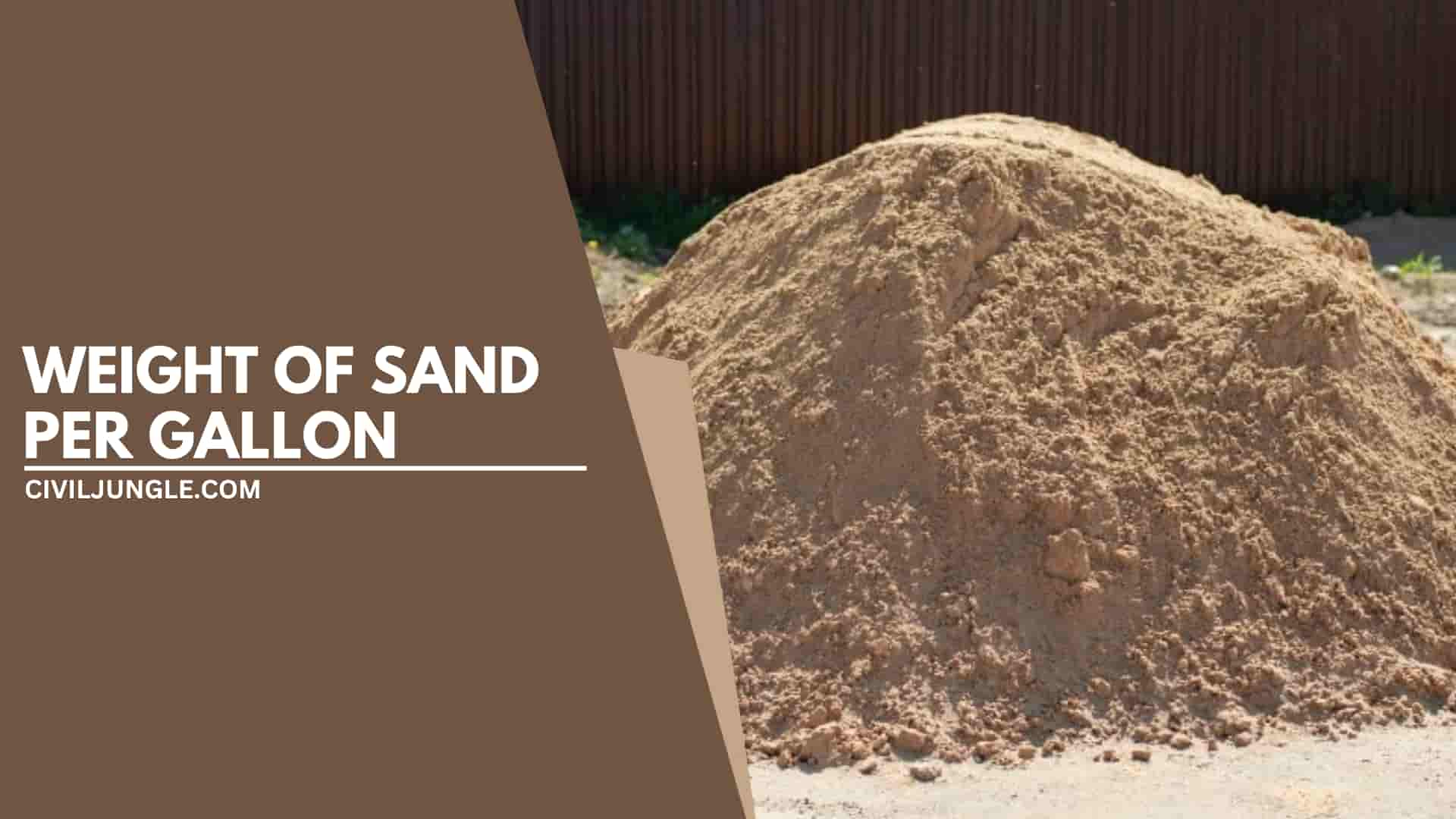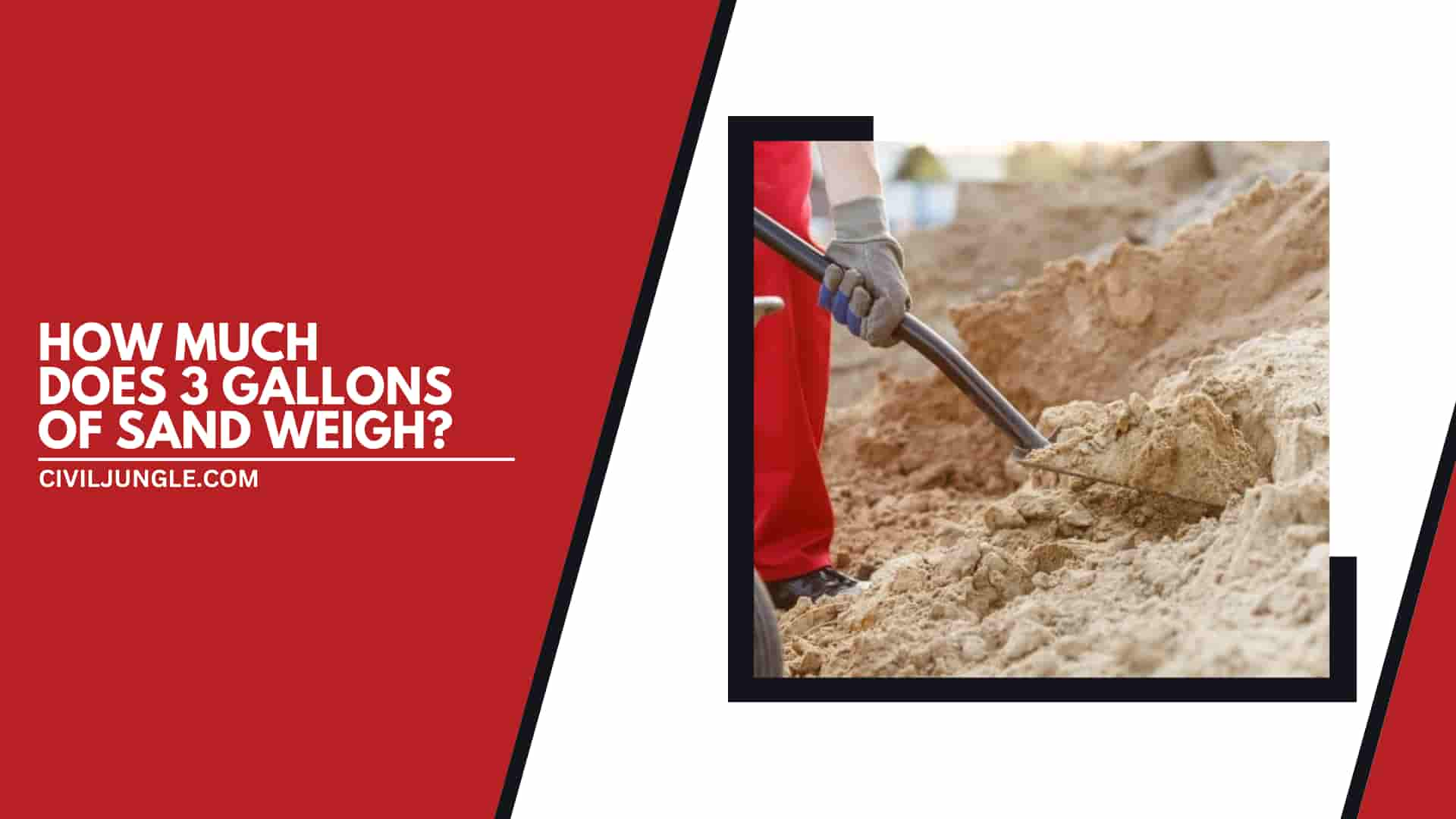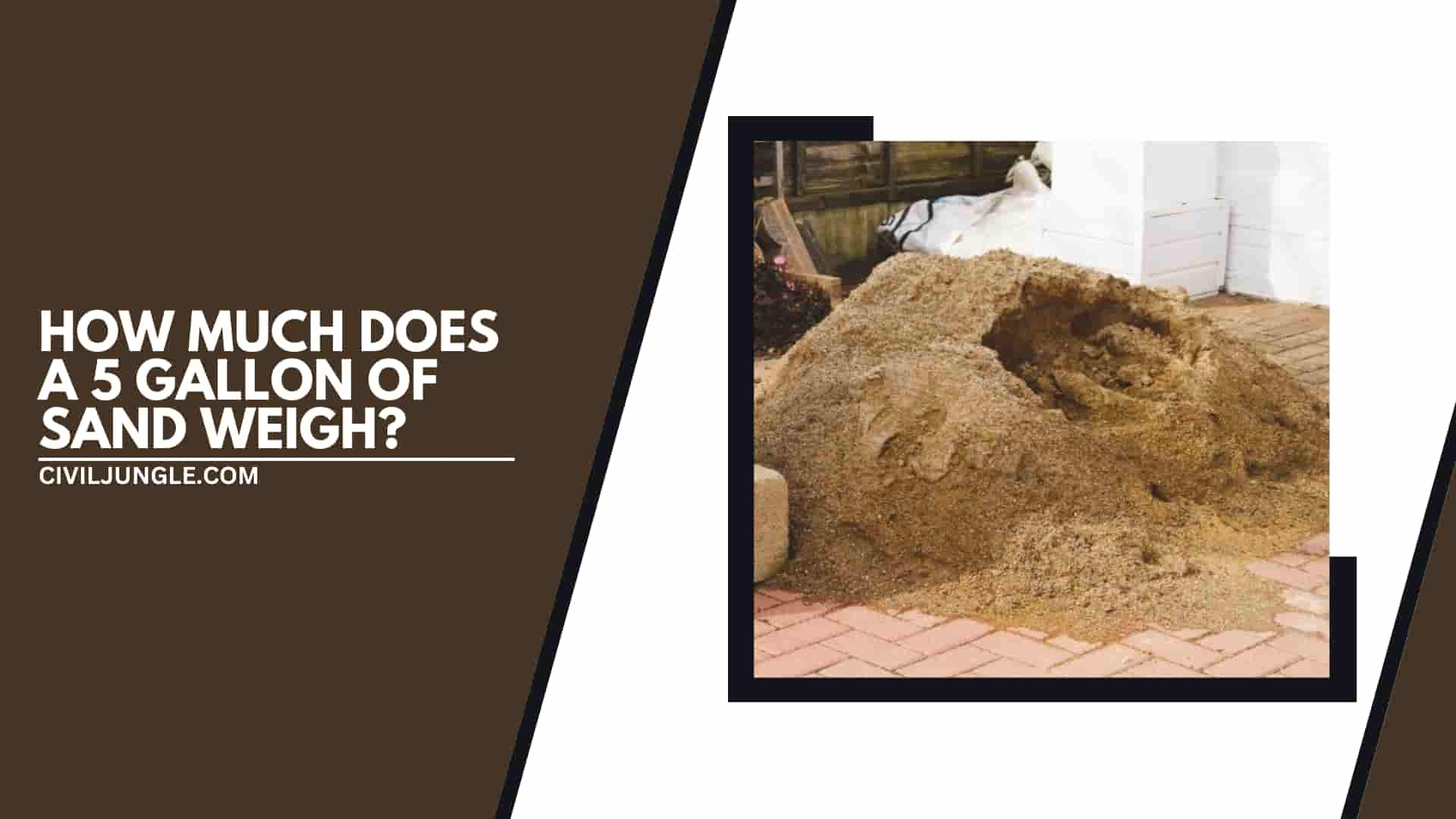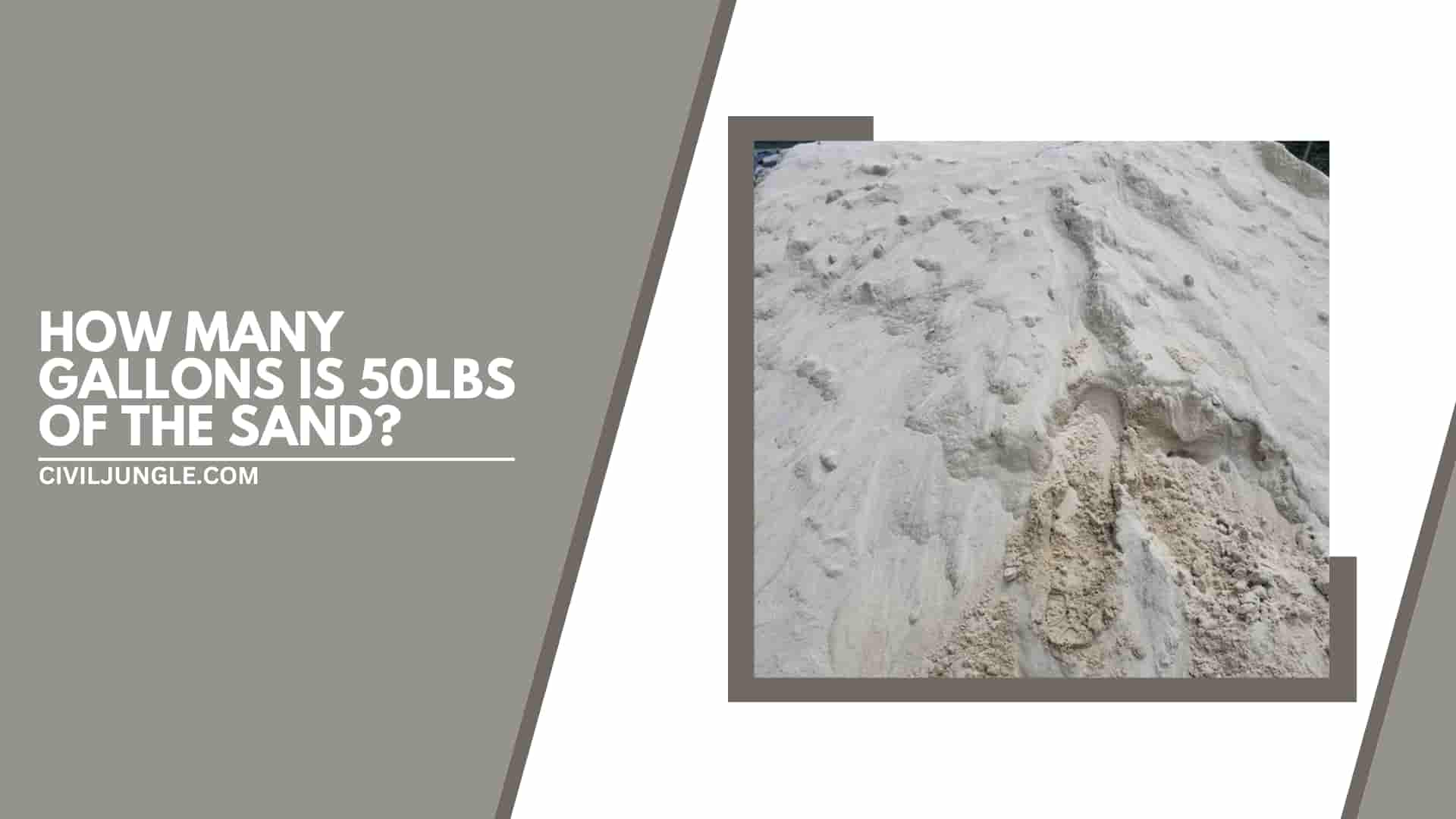
Sand weight per gallon: Sand is a naturally occurring granular material composed of the finely divided of rock and mineral particles, rounded and polished to varying degrees.
Sand is one of the most abundant materials on Earth.
Sand is classified as fine gravel or coarse silt.
The second most common type of sand, found mainly on islands and near oceans, is calcium carbonate and is made by various life forms such as corals and shellfish.
In some cases, “sand” refers to the textural class of soil – more than 85% of its mass consists of sand-sized particles.
The most common component of sand in inland.
continental settings and non-tropical coastal settings is the silica quartz silicon dioxide – SiO2.
Sand is a renewable resource in the long term, but on a human-time scale, it is practically non-renewable.
Sand is the main component of concrete, and due to the high demand for concrete for construction, suitable concrete sand is also of a tall order.
The most popular sizes of sandbags are 14 inches by 26 inches (36 cm by 66 cm) and 18 inches by 30 inches.
The density of sand is 1602 kg per cubic meter.
So one gallon of dry powder sand is 7056 kg—the equivalent of 15.543 pounds per gallon.
Sandbags can survive for at least 3-6 months in direct sunlight and places with high temperatures, such as California and Florida.
And they have 1600 hours of UV protection.
The weight of sand is a determined by its density, which can vary depending on whether it is loose, dense, dry, compacted, grain size, or wet.
Sandbags of such dimensions and sizes are used to build an interlocking sandbag wall like bricks, with the weight of sand in the bag.
A gallon of natural dry sand can weigh about 13.5 pounds, dry loose sand weigh about 12 pounds, and dry packed sand weigh about 13.5 pounds.
The sandbag should be ½ to ⅔ full and weigh 35-40 pounds.
Thirty sandbags would be about 1000 pounds, the maximum legal limit for a standard pickup truck.
Weight Per Gallon Cups quickly and accurately determine the weight per gallon and specific paint gravity.
After all, water is not as heavy or dense as sand, and if there is sand in the bucket to make room for the water, less sand has to be held in it.
Therefore, a mixture of sand and water should weigh less than sand alone.
Many builders and gardeners calculate or estimate the amount of needed to sand a given area.
The calculation procedure is as follows.
- The approximate density of sand is 1600 kg/m3 100 lb/ft3.
- Multiply the volume by the thickness in the same units to get the weight.
- Estimate the amount of sand needed using geometric formulas and plans or measurements.
The weight of sand depends on dry, moist, loose, and compact conditions, with the dry weight being approximately 100 lb per cubic foot, 2700 lb per cubic yard, or 1.35 short tons per cubic yard, if you want a particular significance.
If you want a particular significance, the supplier can tell you when you buy the sand if you wish at a specific weight.
Also, Read: Exploring the Diversity of Plaster Types and Their Applications
How Much Does 2 Gallons of Sand Weigh?
Many builders and gardeners are faced with calculating or estimating the amount of sand they need to fill a given space with sand.
And our sand calculator is of great utility in such cases, but remember that the results will only be as good as the measurements entered.
Two gallons of natural dry sand can weigh about 27 pounds or 12.26 kg.
And two gallons of dry loose sand weigh approximately 10.92 kg or 24 pounds.
Dry-packed sand weighs about 12.6 kg or 28 pounds for 2 gallons.
2 gallons of wet sand weighs approximately 14.54 kg or 32 pounds, and 2 gallons of damp sand weighs about 15.76 kg or 34.66 pounds.
- The volume of a sand = 2 gallons.
- One gallon = 3.78 liters.
- The volume of sand = 3.78 x 2 liters.
- The volume of the sand = 7.56 liters.
How Much Does 3 Gallons of Sand Weigh?

Three gallons of natural dry sand can weigh about 41 pounds or 18.5 kg.
Three gallons of dry loose sand weigh about 16.5 kg or 36 pounds.
Dry-packed sand weighs about 19 kg or 42 pounds for 3 gallons.
Three gallons of wet sand weigh about 22kg or 48 lbs, and 3 gallons of wet packed sand weigh about 24kg or 52 lbs.
- The volume of sand = 3 gallons.
- One gallon = 3.78 liters.
- The volume of sand = 3.78 x 3 liters.
- The volume of sand in liters = 11.34 liters.
How Much Does a 5 Gallon of Sand Weigh?

Using a 5-gallon bucket of dry sand weighs about 60 to 70 pounds, depending on the density and fineness.
Here’s how much sand this item will contain: 5-gallon bucket = 70 pounds of dry clean play sand, 80 to 90 pounds of wet sand, 50 or 55-gallon size plastic trash can = 700 to 770 kg if the sand is dry.
The bucket could weigh about 80 to 90 pounds.
- The volume of sand = 5 gallons.
- One gallon = 3.78 liters.
- The volume of the sand is 3.78 x 5 liters.
- The volume of sand in liters = 18.90 liters.
Useful Article for You
- How Much Does a Yard of Concrete Weigh
- How Tall Is a Door
- How Many Stairs in a Flight
- How Many Bags of Concrete in a Yard
- How to Get Burnt Smell Out of Microwave
- How Far Apart Should Fence Posts Be
- How Are Bridges Built Over Water
- How Many People Died Building the Great Wall of China
- How to Draw House
- How to Build a Lean to Roof
- How Many Bags of Concrete for 1 Yard
- How Much Does Cinder Block Cost
- How to Get a House for Free
- How Much Does It Cost to Soundproof a Room
- How to Read a Measuring Tape in Meters
- How to Mount a TV on a Brick Wall
- How Many Brick Are in a Cube
- How Is Transported Soil Different from Residual Soil
- How to Use Washers
- How to Get Property for Free
- How Is Tar Made
- How Much Does Gallon of Water Weight?
- How Many Tiles Do I Need?
- How Much Does It Cost to Build a Pergola?
- How Much Does a Concrete Slab Cost?
- How Much Does a Yard of Gravel Weigh?
- How Many Shingles Do I Need for a 24×24 Garage?
- How to Remove Paint from Concrete Without Chemicals
- How to Cover Concrete Walls in Basement
- How to Find Wall load
- How to Build a Cavity Wall
- How Much Does a Heated Driveway Cost
- How Much Spray Foam Do I Need
- How to Get Blood Out of Carpet
- How to Mix Concrete
- How to Find the Contour Interval
- How to Identify Zero Force Members
- How To Install A Welded Wire Fence
- How to Tell If a Wall Is Load Bearing
- How to Replace Outdoor Faucet
- How to Measure Pipe Size
- How to Build a Pier and Beam Foundation
- How Is Cement Made
- How Much Gravel Is in a Ton
- How to Make a Fence Taller
- How to Get Rid of Sulfur Smell in House
You can expect a 5-gallon bucket to weigh about 67 pounds (30 kg) for the dry natural sand and about 80 pounds (36 kg) for wet natural sand.
And the sand can be used for a wide variety of different types of pathways, driveways, and more.
A gallon of water tips the scales at about 8.33 pounds or 3.78 kilograms at room temperature: this means that 5 gallons of water weigh 41.73 pounds or 18.9 kg, which equals 18,905 grams in weight.
Also, Read: Exploring the Hip Roof: Design, Types, and Pros &Cons
How Many Gallons Is 50lbs of the Sand?

Buying a 50-pound bag is typically designed to cover 0.5 cubic feet.
One yard is 27 cubic feet, so it will take 54 50-pound sandbags to equal one yard.
However, some sandbags are designed to cover more or less than 0.5 cubic feet.
Approximately 3.745 gallons are 50 pounds of sand, with 1 gallon being 13.35 pounds.
The approximate average weight of sand is 1600 kg/m3, 1.6 kg/liter or 13.35 lbs/US gallon, which means 1 gallon contains 13.35 pounds of sand, so 50 lbs of sand in one gallon = 50/13.35 = 3.47. 3.745 One gallon is 50 pounds of sand.
Consequently, reviewing the manufacturer’s packaging is essential to see if it lists a different figure.
If so, divide the cubic feet into yards by the detailed coverage of 27.
This will give you an idea of how many sandbags you should buy per yard.
Weight of Sand Per Gallon
The density of sand is 1 602 kilogram per cubic meter. So one dry gallon of dry powdered sand is 7.056 kg. That equals 15.543 lb per gallon. The answer is 155.45 lb.
Sand Weight Per Gallon
The weight of sand per gallon can vary depending on the type and density of the sand. In general, the weight of dry sand is around 100 pounds per cubic foot or approximately 12.5 pounds per gallon. However, this can vary depending on the size and shape of the sand particles as well as any moisture content.
How Much Does a 5 Gallon Bucket of Sand Weigh?
5 gallon bucket = 70 pounds of dry clean play sand (80 to 90 lbs if wet sand)
How Much Does a 5 Gallon Pail of Sand Weigh?
Here is how much sand these item will hold: 5 gallon bucket = 70 pounds of dry clean play sand (80 to 90 lbs if wet sand)
What Does a Gallon of Sand Weigh?
The weight of a gallon of sand can vary depending on the type and density of the sand. In general, the weight of dry sand is around 12.5 pounds per gallon. However, this can vary depending on the size and shape of the sand particles as well as any moisture content.
What Does a 5 Gallon Bucket of Sand Weigh?
The weight of a 5-gallon bucket of sand can vary depending on the type and density of the sand. However, assuming the sand is dry, a rough estimate would be around 62.5 pounds (12.5 pounds per gallon x 5 gallons). This is based on the general weight of dry sand being around 100 pounds per cubic foot or 12.5 pounds per gallon.
How Much Does a Gallon of Sand Weigh?
The weight of a gallon of sand can vary depending on the type and density of the sand. However, in general, the weight of dry sand is around 12.5 pounds per gallon. This is based on the general weight of dry sand being around 100 pounds per cubic foot or 12.5 pounds per gallon.
How Much Does a 55 Gallon Drum of Sand Weigh?
A 55 gallon drum filled with sand weighs 816lbs.
How Many Pounds of Sand Per Gallon?
The weight of sand per gallon can vary depending on the type and density of the sand. In general, the weight of dry sand is around 12.5 pounds per gallon. This is based on the general weight of dry sand being around 100 pounds per cubic foot or 12.5 pounds per gallon.
How Many Lbs of Sand Per Gallon?
The weight of sand per gallon is approximately 12.5 pounds per gallon, assuming that the sand is dry. This is based on the general weight of dry sand being around 100 pounds per cubic foot, which translates to 12.5 pounds per gallon.
However, it’s important to note that the weight of sand per gallon can vary depending on factors such as the type and density of the sand, as well as the presence of moisture.
How Many Pounds of Live Sand Per Gallon?
The weight of live sand can be different from dry sand, as it may contain water, living organisms, and other organic matter. However, a rough estimate is that live sand can weigh between 7 to 8 pounds per gallon.
This is based on the weight of dry aragonite sand, which is commonly used as live sand, being around 90 to 100 pounds per cubic foot, and taking into account the added weight of moisture and living organisms.
What Is the Density of Sand?
The density of sand is approximately 1602 kilograms per cubic meter.
What Are the Common Components of Sand in Different Settings?
In inland continental settings and non-tropical coastal settings, the most common component of sand is silica quartz silicon dioxide (SiO2).
Why Is Sand Considered a Renewable Resource in the Long Term?
Sand is considered a renewable resource in the long term because it is naturally occurring and replenished through geological processes. However, on a human time scale, it is practically non-renewable due to the rate at which it is being extracted and used.
How Long Can Sandbags Survive in Direct Sunlight and High-Temperature Environments?
Sandbags can survive for at least 3-6 months in direct sunlight and places with high temperatures, such as California and Florida. They have 1600 hours of UV protection.
What Is the Weight of a Gallon of Dry Powder Sand?
A gallon of dry powder sand weighs approximately 15.543 pounds.
Like this post? Share it with your friends!
Suggested Read –

